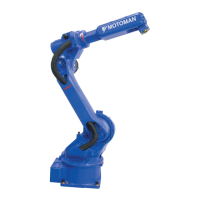4 MLX200 Programming Guide
4.4 Programming Pitfalls and Best Practices
4-20
168542-1CD
168542-1CD
MLX200 Software and
Operations
4.4.2 DN BIT Checking
As mentioned in the previous section, an instruction will only need to stay
enabled until its Sts_DN bit it turned on. However, there are several things
to look out for if using the Sts_DN to control application flow instead of the
Sts_PC bit. Consider the rung of ladder shown in Fig.4-25 "DN Bit
Triggering". In this example, a motion instruction is called when the
step=100 and then the step is incremented to 110 as soon as the Sts_DN
bit turns on. This ladder rung will become disabled as soon as the motion
is finished processing. In this case, the execution of the motion as well as
the internal clean-up will be handled; however, the other status bits of the
motion cannot be updated if the rung is not enabled (i.e. no Sts_AC or
Sts_PC bits). These bits should not be used to control any other logic in
the application.
Fig. 4-25: DN Bit Triggering
A second issue with Sts_DN bit triggering is that it is easy to accidentally
fill the internal motion buffer this way. The hand-shaking between MLX-D
and MLX-R will only take on the order of 10 ms, so if the application had
two rungs going back and forth based on the Sts_DN, the maximum
queue size of 25 will be reached very quickly. In this case, the error shown
in Fig.4-26 "Motion Queue Full Error" will be displayed on the HMI.
It is recommended that application logic is written based on the Sts_PC
bit. If using the Sts_DN bit, read this section carefully to be informed on
possible issues.

